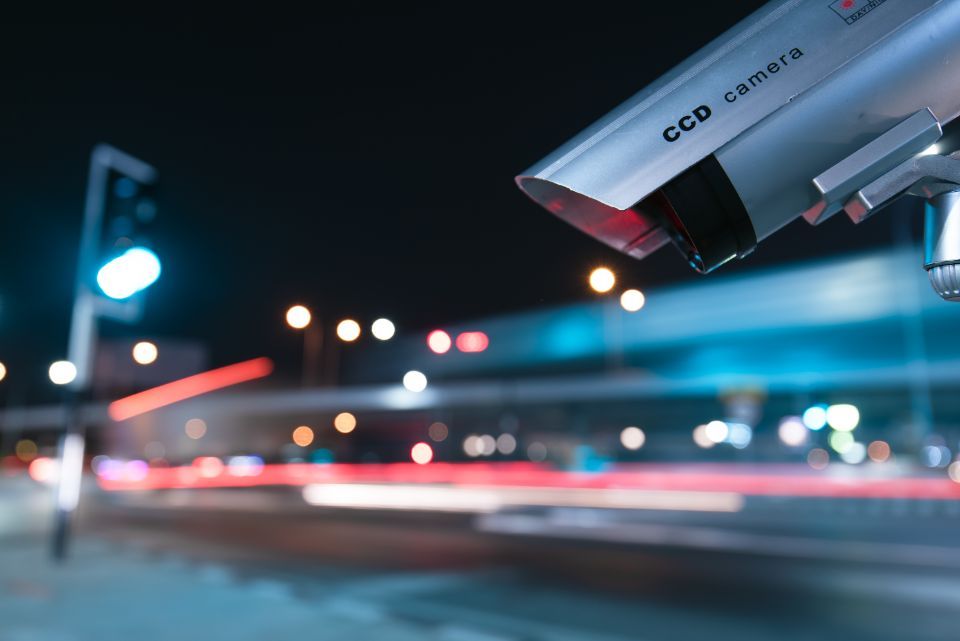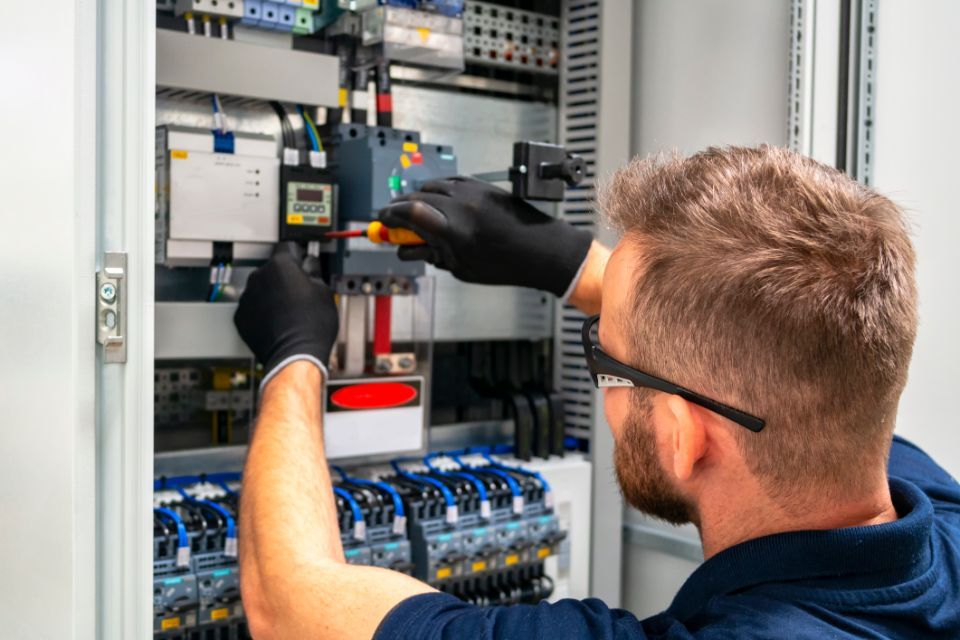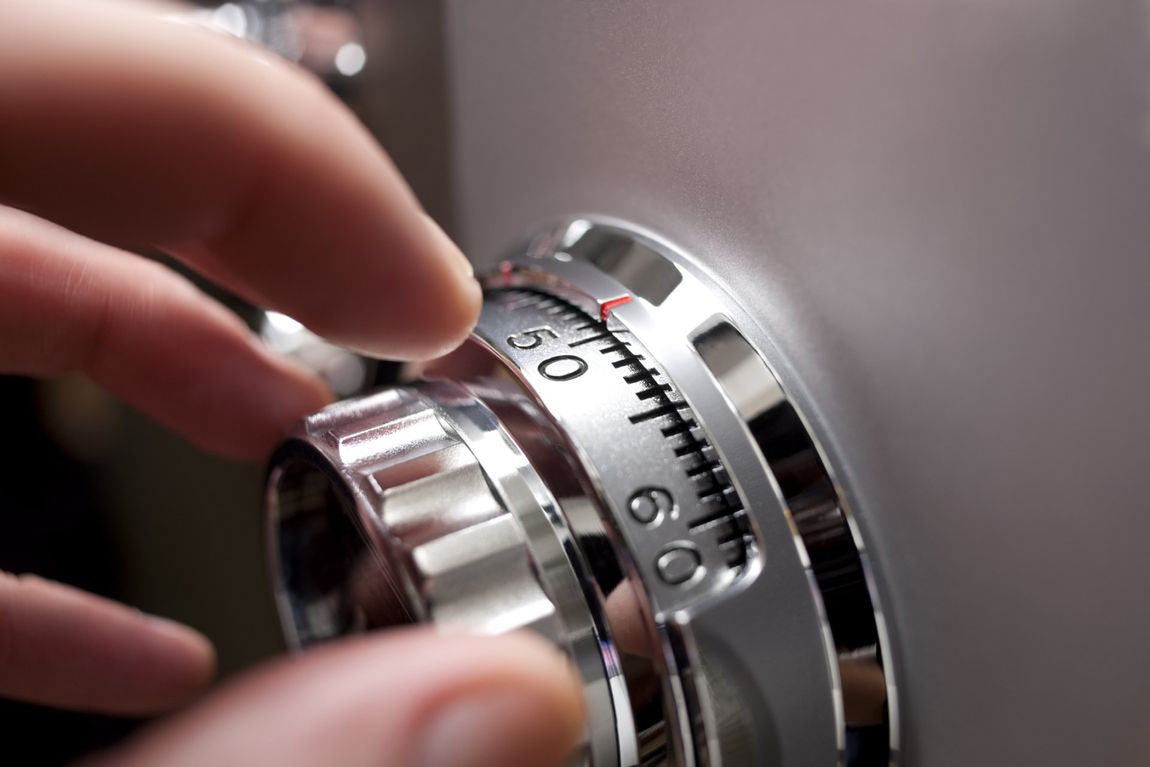Security for banks
Every day, there are hundreds of attacks on various types of bank or safe deposit facility mainly using mechanical means and/or burglary tools, and, less frequently, using gas or explosives. Nearly all of the often-disruptive attacks are on ATMs while safes and vaults are also affected. For unsuccessful burglaries, outside of circumstantial happenoings, it was found that the most frequent causes of failure for criminals was the resistance of the safe or the effectiveness of the alarm and CCTV systems.
The banking sector, specifically banks, has historically been the main integrator and user of physical, electronic and IT security systems. In financial environments, it is of paramount importance to be able to eliminate any possible risk to the facilities, which unsurprisingly require the highest level of security and protection.
Protecting these areas requires careful analysis and specific planning. Having identified the risks to be faced and the amount of damage that could be caused, it is necessary to assess urgency and provide suitable and effective countermeasures, either prevenative or for the containment and control of critical issues.
Telesicurezza Service designs, develops, implements integrated, proactive and managed security solutions based on the most innovative electronic technologies that are selected, tested, integrated and customised to meet customer requirements. It develops projects and installs passive security systems such as:
Physical barriers for the protection of assets, armoured doors and windows, burglar-proof locks, armoured glass, gratings, armoured cabinets, safes and vaults, access and presence control, anti-robbery compasses, metal detectors, self-banking areas, armour plating, interlocks, emergency exits and automatic doors allowing to slow down or prevent possible attacks or intrusions.
Telesicurezza Service offers effective and integrated solutions, capable of satisfying all our customers' needs. In terms of prevention, our security solutions have made it possible to prevent and foil numerous attacks and robberies against branches and ATMs. With the quality of our security systems and high-definition images, we have been able to track down the perpetrators of crimes against our customers.
Security systems
Security systems continue to play a key role in risk management within banks and must meet stringent security, safety and communication criteria. The risks that require management include: robbery; kidnapping; extortion; assault by customers or other third parties; vandalism and fraud at ATMs. Other notable concerns are the integration of safety and security concepts into banking operations; management of a wide variety of access authorisations; intrusion and alarm systems, video surveillance, fire detection and constant monitoring. Full awareness that robberies can affect very delicate aspects of daily operations has led the banking system to pursue the development and strengthening of new forms of collaboration with public order agencies on the one hand and to direct its efforts towards more effective internal prevention, especially through initiatives aimed at the progressive spread of innovative technological security systems and information and training tools for employees on the other.
CEI 79-3 standard
With regard to intrusion alarm systems, the third edition of standard CEI 79-3 "Burglar, anti-intrusion, anti-theft and anti-aggression systems" was published in May 2012. It aligns the previous version with the terminology and classification logic of intrusion and robbery alarm systems, as defined by European standard EN 50131-1, and integrates it with some sections taken from the repealed application guide CEI CLC/TS 50131-7 of 2010.
CEI 79-3 is the national technical standard of reference for the design, implementation, testing and maintenance of intrusion and robbery alarm systems. The requirements of the new standard apply to intrusion alarm systems and robbery alarm systems even if they are installed independently of each other.
Video surveillance
Telesicurezza Service designs and installs integrated and intelligent video surveillance systems using the most advanced technologies and in compliance with the various standards (CEI EN 62676 and laws/regulations on the processing of sensitive data).
Application areas range from Industry to Logistics, from Banking to Retail - including large-scale distribution and Fashion & Luxury - to Public Administration, to the Home (Homes & Residentials), to the Hotel world (Hospitality & Leisure).
A video surveillance system brings advantages and achieves significant goals that go beyond the traditional concepts of security, principally its deterrent effect and the collection of information for investigative purposes.
Telesicurezza Service offers a wide range of analogue, HD, IP and Megapixel cameras, both fixed and motorised. Cameras with thermal and thermographic technology are also available, almost always in combination with video analysis software that is particularly effective, for example, in creating perimeter protection solutions.
Smoke detection
Fire detection system refers to the set of components of fire alarm systems that can detect and signal the presence of a fire within a building or other structure. A smoke and fire detection device typically consists of electronic equipment that detects the presence of smoke or heat changes or the start of a fire, based on the physical phenomena associated with the development of the fire.
Since 1979, Telesicurezza Service's team of engineers, designers and installation technicians have been offering innovative solutions in fire prevention and extinguishing with skill, reliability and professionalism.
From design consultancy to installation of the fire detection and extinguishing system, we are always at the customer's side to ensure the protection of people, buildings and support the customer in all phases of fire-fighting system implementation (from sizing to mandatory six-monthly maintenance) - providing a turnkey service.
Our maintenance, after-sales services and 24-hour availability are essential for us to ensure the continued operation of the system over time and the safety of the customer.
Anti-theft compasses
The anti-robbery compass is undoubtedly the ultimate anti-crime defence tool for the main entrances to banks and jewellery stores - especially when combined with metal detectors ('interlocking compasses') - preventing robberies from taking place by physically blocking the access of criminals. The deterrent effect continues to take effect as it becomes visibly possible to entrap any would-be offender.
High levels of preventative security can be achieved by using a correctly-calibrated metal detector (i.e. adjusted to detect metal mass with the correct sensitivity).
Anti-robbery compasses are now almost ubiquitous in all bank branches and jewellery stores, except in 'open' branches where other technologies and security arrangements are employed. Compasses represent a conditional access passage, regulated by interlocked doors that cannot be opened simultaneously. It allows the passage of one or more people at the same time (double consent compass) and can be operated manually by an operator or work in automatic mode. The automatic mode works with the metal detector which prevents entry of persons in possession of metals such as weapons, knives and blunt instruments. The most secure arrangement is provided by the single-person compasses which are discreetly managed by an operator who selects the persons entering the bank, discouraging any malicious intentions.
Security metal detectors
Metal detectors are designed to detect metal objects on things and people such as knives, blades, guns, etc. They do not detect precious objects.
A metal detector is a device that uses radio waves to detect the presence of metal substances. Its use is wide-ranging although the noblest use is for security reasons, such as banks in the courts, to detect the presence of blades or guns.
Telesicurezza Service specialises in providing maintenance services, defining and organising the necessary resources and materials.
See also: Anti-robbery compasses.
Safety exits
We create innovative access solutions that are highly reliable and durable over time, emergency doors with a high degree of burglar resistance (RC4), high security burglar-resistant armoured doors, rotating or sliding doors and even interlocked double-door systems with push-pull emergency exits.
The literal interpretation of regulations brings problems for those operations (banks, post offices, etc.) for which there is a need to harmonise the requirements of protection of workers in the event of aggression with the requirements governing the health and safety of the workers themselves in the event of an emergency (escape from the place of work).
High-quality professional electromagnets
The electromagnet or electromagnetic suction cup is a device used to block the improper opening of the door (or tampering to let people in without permission). The door is blocked by powering the magnet, while it opens automatically in the event of a power failure or by remote control (emergency opening).
Self Banking Area
Telesicurezza Service has always closely followed developments in branch closure to offer customers the best and most suitable solutions for their needs.
Over the years, bank branches have evolved with the integration of self-banking services and safe areas, up to today's innovative layouts and designs that combine the needs of security with aesthetics and a structure that is more open to the public.
The wide range of products we offer includes multiple usable solutions and to integrate security with customised systems.
We are able to create bespoke solutions which is one of the main factors that sets us apart, always respecting quality, reliability and regulations.
We are able to control every entrance/exit with self-management systems and real-time monitoring of the entire installation. In addition to people access, we can manage armoured gates for the protection of valuables, as well as the creation of self-banking areas, safe areas and the implementation of remote assistance systems. These functions cover control of: compasses, armoured doors, emergency exits, alarms, fingerprint and facial data recognition, anti-intrusion and CCTV systems, etc., all of which can be managed through supervision modules that transfer and interact with the security systems.
Self banking areas with emergency exits
SLIDING DOORS ISA system
Conceived as a modular system, the "ISA" series (intelligent speed adaptation system) includes simple or multi-function sliding entrances which have made it possible to offer effective and complete solutions, useful for those who require automatic sliding doors with an escape route.
The operating principle of the "ISA" breakout door, equipped with an automatic opening/closing system that includes total breakout of the panes, is designed to ensure that the customer can create an entrance where necessary while maintaining the comfort, safety and durability that distinguish our doors. The total breakout of each entrance in the "ISA" series is activated by simply pressing on the panes: it is the pressure that transforms the sliding door into a panic door with side collection of the panes and a hinged opening with a 90° angle.
The "ISA" break-out sliding door is ideal for use where escape routes and/or emergency exits are provided, allowing the opening space to be fully utilised, or where it is essential to simplify the passage of any bulky means of transport.
SLIDING DOOR ISA system
The ISA break-out hinged door is an entrance that features both automatic opening and the possibility of total break-out of the wings. To activate the break-out system, light pressure must be exerted on the panes: this activates the anti-panic system which allows the panes to swing open in the opposite direction to the direction of automatic opening. The use of an ISA series swinging breakout door makes it easier to pass through and create an escape route.
ROTOTRANSLATING BREAK-OUT DOOR
The 2-pane rototranslating breakout door, manual or automatic, is the technological solution for entrances where space is limited. The rototranslating emergency doors combine the elegance of the shape with the functionality of an automatic door which can be used both to allow the passage of high traffic and to facilitate escape during an emergency.
Swinging doors are transformed into hinged emergency exits with simple pressure on the panes thanks to a system that allows the panes to open in the opposite direction to normal during the movement of the automatic door. The hinged opening leaves the passageway completely free.
Interlocks
Whether you are a small, medium or large company, when you feel the need to feel more secure, 'do it yourself' is never an effective solution. Before relying on unprofessional tools or following the advice of friends, it is better to understand what your personal needs are and, above all, the needs of the environment in which you work. What you really need is a project designed specifically for your company which will lead to the choice of the right tools to give you the peace of mind you need. That's why you need to install a thief-proof protection system that allows you to monitor your company 24 hours a day and protect the people, objects and merchandise inside.
Access and attendance control
What are the differences between a system that checks attendance and one that checks access?
A Time and Attendance system is concerned with personnel management: it records entry and exit times, calculates the hours worked, divides them into pay classes and finally, exports the data to HR in small, medium and/or large companies to process the payroll.
A Time and Attendance system is the solution that allows you to calculate the daily, weekly and monthly hours of attendance of any internal or external employee, under any company contract and in an automatic manner that is also able to transfer data to your payroll software in order to create the payroll and the Single Book (LUL) without the need for manual intervention.
Access control, on the other hand, refers to the automatic management of entrances to operational areas and corporate security Industrial safety - A set of directives, practices and technologies aimed at reducing the levels of risk and injury within industrial settings in order to achieve a safe working environment. This includes, access control in order to restrict access to company areas and zones: who, where, when, how and why a user can access an internal restricted or hazardous area (safety and security).
For example, an employee enters the workplace through a gate; the electronic system installed at the gate, opening for people, cars, etc. can be free or controlled with an access control system. It verifies and identifies an individual based on information that was previously provided. Verification is performed using methods such as: badge cards, tags, biometric characters, PIN, etc. The process verifies whether the data entered meets certain conditions or limitations. Whether the person is authorised to enter (or leave) and at the same time records the time of entry (or exit).
Turnstile
Bi-directional tripods are installed at the access points for staff coming from the car park or from outside to ensure that only the badge holder - an authorised person - can pass through. Control is implemented only on entry, while rotation of the tripod is free on exit.
TURNSTILES
Model designed to create a real transit corridor in order to enable better control of passages.
The long type box obliges the user to cover the entire length of the passageway, discouraging attempts to bypass it.
The mechanism and its controls are accessible from above.
Supplied with an automatic release in the event of a power failure, individual LED traffic lights (red/green) and a control panel for operation.
The mechanism and its controls are accessible from above. Equipped to mount a reader.
Automatic doors
From shopping centres, to public places, to private homes: where automatic doors can be installed.
This type of closure is ideal in contexts with high intensity transit (such as shops, shopping centres, restaurants, hospitals, railway stations, public buildings, etc.) as it allows the flow of people to be controlled and promotes thermal insulation, reducing heat loss in winter and coolness in summer. In commercial establishments, automatic doors are also fitted with anti-panic emergency opening systems that make it possible to manually unlock the door in the event of a fault, power failure or the need to quickly evacuate the area for safety reasons.
It is also specifically required in places where it is necessary to eliminate architectural barriers and maintain high levels of hygiene, such as hospital wards and operating theatres. In these environments, automatic doors are also fitted with hermetic and semi-hermetic closures because it is important to ensure high levels of thermal, acoustic and sanitary insulation.
Safes and Vaults
Passive security systems act as a 'physical barrier' between the property to be protected and the intruder. This category includes armoured doors, burglar-proof locks, grates, safes, armoured cabinets, fences and any other system that can slow down a possible intrusion.
We offer effective, integrated solutions, capable of making any bank or financial office secure and controlled. This is thanks to the experience gained from dealing with the needs of banks on a daily basis.
E.g.: access and presence control, anti-robbery compasses, metal detectors, self-banking area, safes, armour plating, interlocks, security exits, automatic doors.
Armouring
Telesicurezza Service manufactures and installs armoured walls typically intended for the protection of rooms where the bank's strong points are located (Safe area), consisting of a honeycomb structure and covered with sheet metal on both sides. The walls are made with continuous wire welding for the frame and spot welding for the infill sheets.
We are able to create: Armoured rooms for jewellers, Armoured rooms for storing documents, Armoured rooms for storing high-risk drugs, Armoured cabins for armouries, panic rooms and many other less conspicuous applications that are often needed to make people feel safer at home, in public offices, subways, railway stations, airports, schools, museums, etc.
Fill out the form to request specifications, technical datasheets or a no-obligation service quote
























